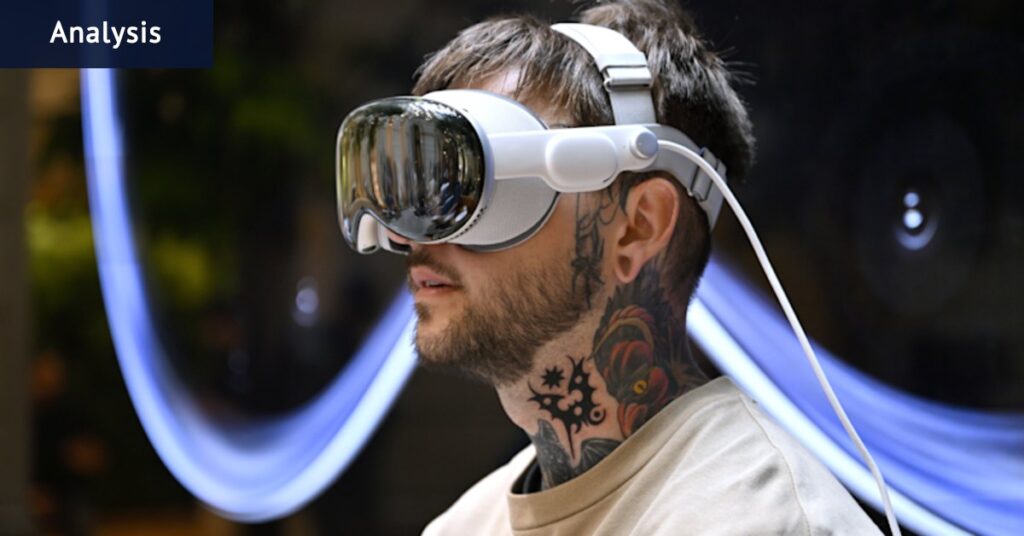
Let’s face reality: Virtual reality (VR) is struggling to capture the mainstream audience. Despite significant investments from tech giants like Meta, Apple, Sony, and Samsung, VR headsets remain costly, cumbersome, and largely unused. The year 2025 finds VR in a peculiar position—technically advanced yet existentially challenged.
Billions have been poured into VR technology, and while the headsets boast impressive specifications, they often end up as expensive, underutilized gadgets. The technology works, but the enthusiasm to use it is missing.
The $6000 Paperweight
Consider Apple’s Vision Pro, introduced as the company’s first major product since the Apple Watch. Launched in Australia at a staggering $5999, it is Apple’s most advanced consumer technology. The M5-powered version offers sharper displays, sophisticated eye tracking, and seamless integration with other Apple devices. Yet, it feels like a solution in search of a problem.
The Vision Pro’s issue isn’t technical but existential. Even when functioning perfectly, users are left questioning why they should use it over traditional devices like laptops. Apple, Meta with its Quest 3S, and Sony with its PSVR 2 have all created impressive hardware, but they lack a compelling reason for existence.
The Missing Killer App
Every transformative technology needs a killer app—a compelling use case that justifies its existence. Smartphones had instant messaging and mobile internet; personal computers had spreadsheets and word processing. VR, however, lacks such a defining application.
The most notable VR game, Beat Saber, offers fun for a short while before the physical discomfort of wearing a headset sets in. Games like Half-Life: Alyx and Superhot VR are excellent but not enough to justify prolonged use. As one tech reviewer candidly noted, even the most enthusiastic tech reviewers find it hard to make time for VR in their daily lives.
“The reality is that even the most enthusiastic of tech reviewers only has so many hours in each day, and if a device doesn’t manage to eat some of those up, that’s no shameful thing.”
VR once dominated venture capital and tech conference discussions, but now AI technologies like ChatGPT have taken center stage. AI offers practical applications on devices people already own, making it hard for VR to compete.
The Physics Problem
VR headsets face a fundamental hardware challenge: they are inherently uncomfortable. The Vision Pro weighs 725 grams, akin to an iPad Mini, but worn on the head. Meta’s Quest 3S is lighter but requires a battery pack. Compared to regular glasses, which weigh 20 to 30 grams, VR headsets are a constant reminder of the technology’s presence.
Moreover, VR displays need a resolution of 7100 to 10,000 pixels per square inch to achieve human-level visual fidelity. Current headsets manage around 2000, leaving users aware of the technology rather than immersed in the experience.
The Isolation Chamber
VR’s most fundamental flaw may be philosophical: it requires users to block out the real world. While manufacturers now include pass-through video to mitigate this, it remains a Band-Aid solution. VR inherently isolates users, making it socially awkward compared to traditional gaming.
Interestingly, some of VR’s most successful applications are in professional settings. Australian sheep farmers use VR for climate-resilient farming training, and companies like Vantari and Viewport XR offer VR solutions for medical and industrial training. These applications highlight VR’s potential as a professional tool rather than a consumer product.
The AR Alternative
Augmented reality (AR) presents a more promising future. Devices like Meta’s Ray-Ban smart glasses, which enhance rather than replace reality, are gaining traction. AR glasses are socially acceptable, comfortable, and integrate seamlessly into daily life.
Future AR applications could include hands-free video calls, instant translation, and real-time information overlays, making them practical for everyday use without isolating users from reality.
The Future
While VR is technically impressive and magical in the right circumstances, it hasn’t found its place in everyday life. After a decade of anticipation, it appears VR has missed its window. The future of immersive computing likely lies in AR, delivered through devices that resemble regular glasses. When this technology matures, today’s VR headsets may be seen as impressive yet ultimately misguided innovations.
Until then, many VR devices will continue to serve as reminders of investments not fully realized.
Get news and reviews on technology, gadgets, and gaming in our Technology newsletter every Friday. Sign up here.






